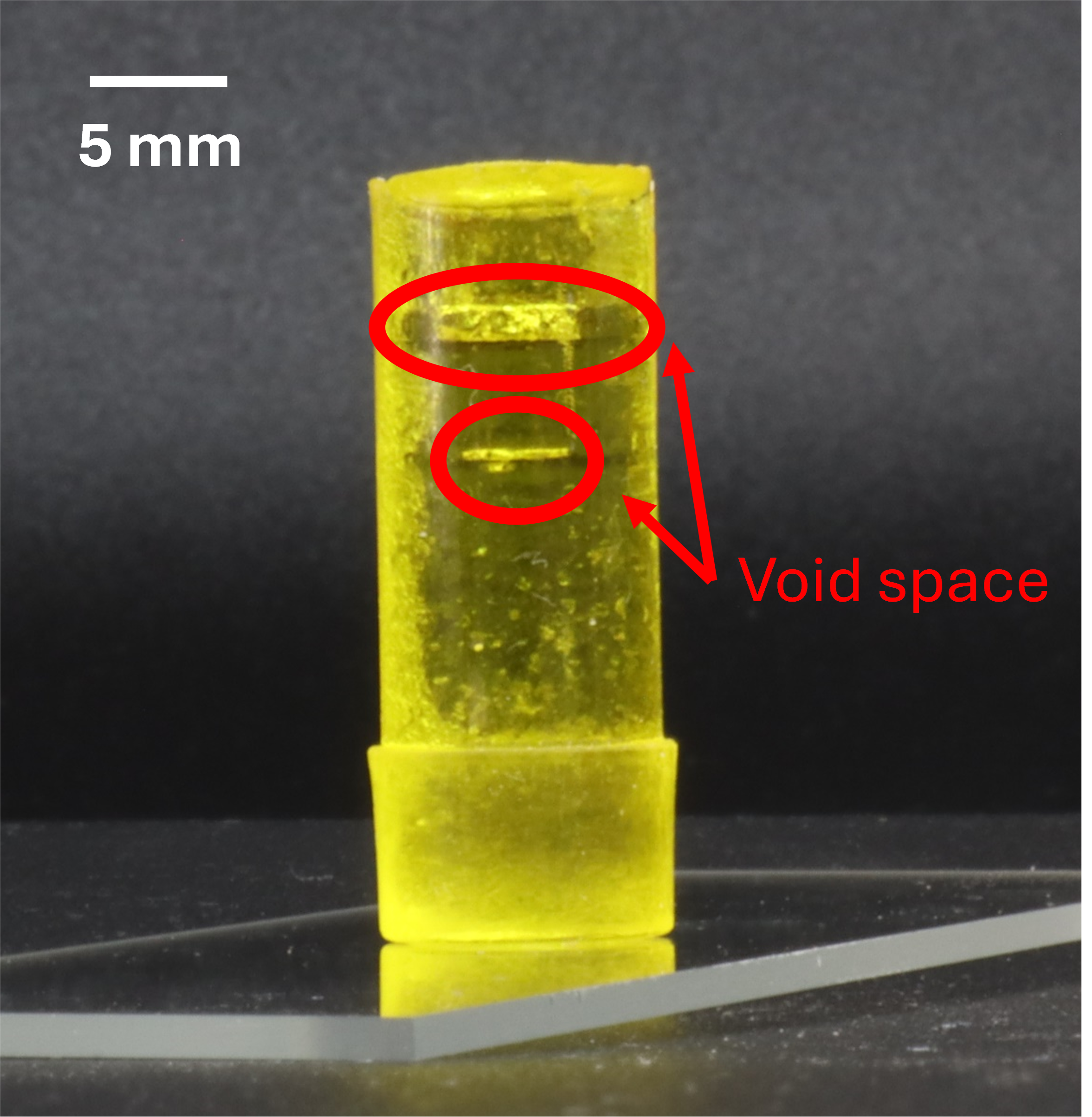LLNL’s and UC Berkeley’s U.S. Patent No. 10,647,061 invented Computed Axial Lithography, otherwise known as Volumetric Additive Manufacturing. By projecting tomographically patterned light into a rotating vial filled with photo-polymer resin materials, the resin is selectively polymerized, and a 3D structure is formed all-at-once within seconds. However, the invention is lacking when it comes to negative feature fabrication. In general, due to its additive nature, AM methods are inherently not suitable for negative feature fabrication.
This LLNL invention is comprised of (1) a volumetric subtractive manufacturing system which can tomographically manufacture 3D structures with negative features (materials in negative space is degraded with light exposure), and (2) a hybrid volumetric additive/subtractive manufacturing system in which a gelled/solid structure is printed by resin material polymerization using one light, and subsequently some part of the printed structure is removed by polymer material degradation using another light.
Image Caption: Proof-of-concept demonstration of VSM: the material in negative space receives enough accumulated light energy to degrade, resulting in negative features printed
- Ability to “3D print” negative features with better performance
- Works with standard VAM machines
- Potential to achieve hybrid volumetric additive/subtractive manufacturing by using photo-selective resin materials: a resin will polymerize under illumination of light with one wavelength and degrade under illumination of light with another wavelength.
- Microfluidics fabrication
- 3D printing of vascular structures
Current stage of technology development: TRL 2
LLNL has filed for patent protection on this invention.


